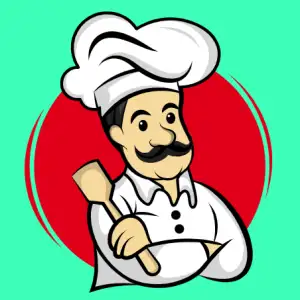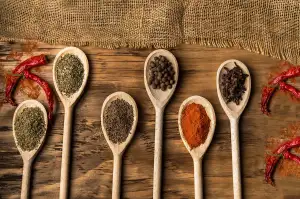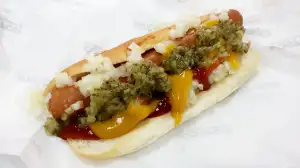Mastering the Art of Cooking with a Convection Oven: Your Ultimate Guide to Home Cooking Success

- Understanding the Basics of a Convection Oven
- Preheating the Convection Oven
- Adjusting Cooking Times and Temperatures
- Using the Convection Setting for Baking
- Using the Convection Setting for Roasting
- Using the Convection Setting for Broiling
- Tips for Successful Cooking in a Convection Oven
- Cleaning and Maintaining Your Convection Oven
Convection ovens have revolutionized the way we cook at home, providing faster and more even cooking results. Unlike traditional ovens, which rely on radiant heat, convection ovens use a fan to circulate hot air, ensuring that food cooks evenly from all sides. This not only reduces cooking time but also enhances the flavors and textures of your dishes.
Whether you're a seasoned chef or a novice in the kitchen, mastering the art of cooking with a convection oven can take your culinary skills to new heights. In this ultimate guide, we will explore the basics of convection ovens, learn how to adjust cooking times and temperatures, and discover the various settings for baking, roasting, and broiling. Get ready to unlock a world of possibilities in your own kitchen with the power of a convection oven!
Understanding the Basics of a Convection Oven
A convection oven is a kitchen appliance that uses a fan and exhaust system to circulate hot air evenly around the food. This constant circulation of hot air ensures that the food cooks more quickly and evenly compared to a conventional oven.
The fan in a convection oven helps to distribute heat evenly, eliminating hot spots and reducing cooking time. This means you can cook multiple dishes at once without worrying about uneven cooking.
Convection ovens also have an exhaust system that helps to remove moisture from the oven, resulting in crispier and more golden-brown foods. The combination of the fan and exhaust system makes convection ovens ideal for baking, roasting, and broiling.
It's important to note that not all recipes are suitable for convection cooking. Some delicate dishes may require traditional baking methods to achieve the desired results. However, once you understand how a convection oven works, you'll be able to adapt your favorite recipes for optimal cooking success.
Preheating the Convection Oven
Before you start cooking with your convection oven, it is crucial to preheat it properly. Preheating ensures that the oven reaches the desired temperature before you place your food inside. This step is essential for achieving even and consistent cooking results.
To preheat your convection oven, simply turn it on and set the desired temperature. Unlike traditional ovens, convection ovens heat up faster due to their built-in fan that circulates hot air throughout the cooking chamber. Generally, convection ovens take about 5-10 minutes to preheat, which is significantly shorter than conventional ovens.
During the preheating process, keep an eye on the oven's display or thermometer to know when it has reached the desired temperature. Some convection ovens have a preheat indicator light that turns off when it's ready. It's important not to rush this step as proper preheating ensures optimal cooking results.
Once your convection oven has reached the desired temperature, it's time to start cooking! Remember that preheating is an essential step in mastering the art of cooking with a convection oven and should never be skipped.
Adjusting Cooking Times and Temperatures
One of the key advantages of cooking with a convection oven is its ability to cook food faster and more evenly. However, it's important to note that cooking times and temperatures may need to be adjusted when using a convection oven compared to a conventional oven.
When using a convection oven, you can typically reduce the cooking time by about 25%. This is because the hot air circulation in the oven helps to cook the food more quickly. For example, if a recipe calls for baking at 350°F for 30 minutes in a conventional oven, you can reduce the temperature to 325°F and bake for approximately 22-23 minutes in a convection oven.
It's also important to keep in mind that convection ovens tend to cook food at slightly higher temperatures than what is indicated on the dial. To ensure your food doesn't overcook, it's recommended to lower the temperature by about 25 degrees or check for doneness earlier than usual.
Additionally, it's crucial to monitor your food closely while it cooks in a convection oven. Since the hot air circulates rapidly, there is a higher chance of food drying out or becoming too browned. To prevent this, you can cover your dish with foil or use a lower rack position.
By adjusting cooking times and temperatures appropriately, you'll be able to achieve perfectly cooked dishes every time with your convection oven. Experimenting with different recipes will help you become more familiar with how your specific model works and allow you to confidently master the art of cooking with this versatile appliance.
Using the Convection Setting for Baking
Using the convection setting for baking can greatly enhance your culinary creations. The circulating hot air in a convection oven ensures even heat distribution, resulting in perfectly baked goods every time. When using the convection setting for baking, it is important to reduce the temperature by about 25 degrees Fahrenheit compared to traditional baking recipes. This adjustment prevents over-browning and helps maintain the moisture in your baked goods. Additionally, be sure to use shallow pans or baking sheets to allow for proper air circulation. Experiment with different recipes and keep an eye on your baked goods as they may cook faster than expected. With practice, you'll soon become a master of baking in your convection oven.
Using the Convection Setting for Roasting
Roasting is a popular cooking method that brings out the natural flavors of meats and vegetables. With a convection oven, you can achieve even better results. When roasting in a convection oven, the hot air circulates around the food, ensuring that it cooks evenly and quickly.
To roast in a convection oven, start by preheating it to the recommended temperature. Place your meat or vegetables on a roasting rack or directly on a baking sheet. The circulating hot air will help to brown and crisp the exterior while keeping the interior moist and tender.
Remember to adjust your cooking time when using the convection setting. Since convection ovens cook faster than traditional ovens, reduce the cooking time by about 25%. However, it's always best to use an instant-read thermometer to ensure your food reaches the desired internal temperature.
When roasting with a convection oven, you can also experiment with different seasonings and marinades. The circulating hot air helps to intensify flavors and create delicious caramelization on the surface of your food.
To prevent excessive browning or drying out of your roast, consider covering it loosely with aluminum foil during part of the cooking process. This will help retain moisture while still allowing for proper browning.
Once your roast is cooked to perfection, let it rest for a few minutes before carving. This allows the juices to redistribute throughout the meat for maximum flavor and tenderness.
Using the convection setting for roasting in your oven opens up endless possibilities for creating succulent dishes that are sure to impress. So go ahead and explore this versatile feature for flavorful and perfectly roasted meals every time.
Using the Convection Setting for Broiling
Broiling is a popular cooking method that involves high heat from above to quickly cook and brown food. With a convection oven, you can take your broiling game to the next level. When using the convection setting for broiling, make sure to adjust the rack position so that the food is closer to the heating element.
To achieve optimal results, preheat your convection oven on the broil setting. This will ensure that the oven reaches the desired temperature before you start cooking. Place your food on a broiler pan or a baking sheet with a wire rack to allow air circulation and even browning.
When broiling in a convection oven, keep an eye on your food as it can cook faster than in a conventional oven. It's recommended to use a lower temperature than what you would typically use in a regular broiler. Start with a lower temperature and adjust accordingly based on your desired level of doneness.
Remember to flip your food halfway through cooking to ensure even browning on both sides. Use tongs or a spatula to carefully turn over meat, fish, or vegetables.
The convection setting helps distribute heat evenly throughout the oven, resulting in faster and more efficient cooking. It also reduces hot spots and ensures that your food is cooked evenly from all angles.
Whether you're broiling steak, chicken, fish, or vegetables, using the convection setting in your oven will help you achieve deliciously caramelized and perfectly cooked results every time. Experiment with different seasonings and marinades to enhance flavors and create mouthwatering dishes.
With practice and experimentation, you'll soon become adept at using the convection setting for broiling in your home kitchen. Enjoy exploring new recipes and techniques as you continue mastering the art of cooking with your convection oven!
Tips for Successful Cooking in a Convection Oven
1. Use shallow, flat pans: This allows for better airflow and ensures even cooking.
2. Reduce cooking time: Convection ovens cook faster than conventional ones, so adjust your cooking time accordingly.
3. Lower the temperature: Lower the temperature by 25 degrees Fahrenheit to prevent overcooking or burning.
4. Rotate dishes: To ensure even browning, rotate dishes halfway through the cooking process.
5. Avoid overcrowding: Leave enough space between dishes to allow hot air to circulate freely.
6. Check food frequently: Keep an eye on your food as it cooks since convection ovens can cook faster than expected.
7. Use low-sided pans for baking: Low-sided pans allow heat to reach the food more efficiently, resulting in better browning and crispness.
8. Cover with foil when needed: If you notice that your food is browning too quickly, cover it with foil to prevent burning while allowing it to continue cooking.
9. Use the right cookware: Opt for light-colored or shiny pans as they reflect heat better and promote even cooking.
10. Let food rest after cooking: Allow cooked food to rest for a few minutes before serving to lock in flavors and juices.
By following these tips, you'll be well on your way to mastering the art of cooking with a convection oven!
Cleaning and Maintaining Your Convection Oven
Cleaning and maintaining your convection oven is essential to ensure its longevity and optimal performance. After each use, allow the oven to cool down completely before cleaning. Start by removing any food debris or spills with a damp cloth or sponge. For stubborn stains, use a mild detergent or oven cleaner specifically designed for convection ovens. Avoid using abrasive cleaners or scrub brushes that can damage the interior surface. Remember to clean the oven racks separately using warm soapy water and a non-abrasive sponge. Regularly check and clean the oven vent and fan to prevent any buildup of grease or dirt. Lastly, don't forget to wipe down the exterior of the oven with a damp cloth to keep it looking pristine. By following these simple cleaning steps, you can maintain your convection oven in top-notch condition for years of delicious cooking adventures.
In conclusion, cooking with a convection oven can elevate your culinary skills to new heights. By understanding the basics and making a few adjustments, you can achieve delicious and evenly cooked meals every time. Whether you're baking, roasting, or broiling, the convection setting will provide you with faster cooking times and superior results.
Remember to preheat your oven for optimal performance and adjust cooking times and temperatures accordingly. Experiment with different recipes to fully explore the capabilities of your convection oven. And don't forget to follow our tips for successful cooking, such as using shallow pans and monitoring your food closely.
Lastly, maintaining your convection oven is essential for its longevity and continued efficiency. Regular cleaning and proper care will ensure that it remains in top condition for years to come.
So go ahead, embrace the power of a convection oven and embark on a journey of culinary excellence in the comfort of your own home. With practice and patience, you'll soon become a master chef capable of creating mouthwatering dishes that will impress family and friends alike. Happy cooking!
Published: 11. 01. 2024
Category: Home



